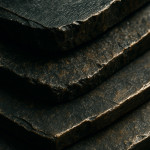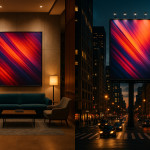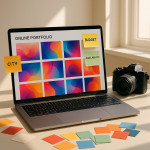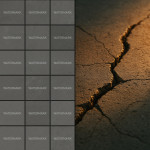Curating Abstract Photography for Offices: Recruiter-Focused Selection Checklist
Need to impress corporate decision-makers fast? This guide equips recruiters and workplace designers with a proven, step-by-step checklist to source, evaluate, and license abstract photography that boosts brand image, employee wellbeing, and visitor engagement—all while staying on time and on budget.
Why Abstract Photography Is a Corporate Power Move
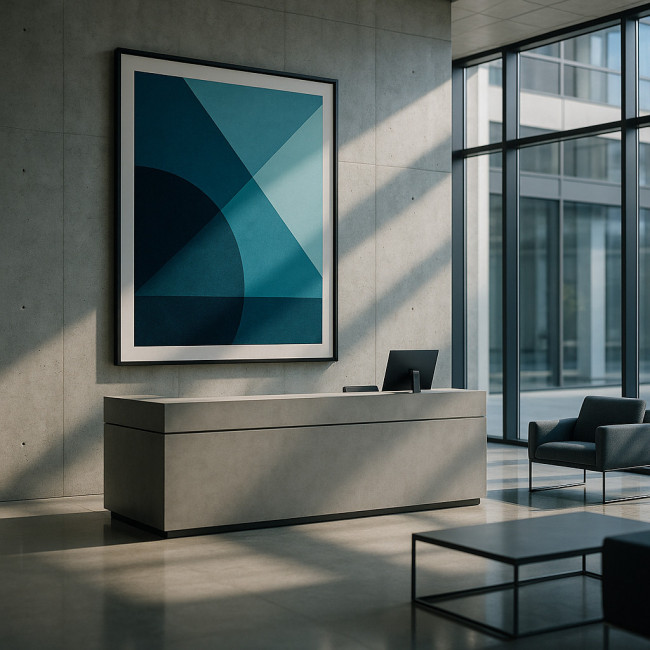
Unlike figurative art, abstract images sidestep cultural, gender, and age biases. They stimulate curiosity through colour, form, and texture, encouraging micro-breaks that refresh focus. Recent workplace studies show that exposure to non-representational art can raise creative problem-solving scores by up to 17 % and cut perceived stress by 10 % during demanding tasks.
Business Benefits at a Glance
- Universal appeal : Works across departments, regions, and visitor demographics.
- Brand alignment : Colour palettes, shapes, and scale can mirror corporate values without overt slogans.
- Long-term versatility : Abstract prints rarely look dated, reducing refresh cycles and procurement cost.
Recruiter Checklist: From Brief to Installed Print
- Define core objectives. Are you boosting client perception in reception, inspiring teams in breakout zones, or calming high-pressure sales floors? List desired psychological outcomes (e.g., energy vs. serenity).
- Audit environmental constraints. Measure wall sizes, sightlines, ambient light, and existing colour schemes. Note surfaces that need anti-glare laminates or acoustic panels.
- Gather style references. Use saved collections from the abstract photographer directory to narrow mood boards to three coherent themes.
- Run a shortlisting sprint. Apply directory filters—scale, dominant colour, licensing tier—to create a top-10 list. Need help? See this filter-driven guide.
- Score visual texture. Zoom to 100 % to inspect grain, blur, and layering. A quick primer on what recruiters spot is covered in this deep dive.
- Check file specs. Request native resolution, colour profile (Adobe RGB or sRGB for digital signage), and minimum DPI based on final print size.
- Validate usage rights. Confirm territory, duration, and reproduction clauses. If uncertain, follow the playbook in commissioning abstract photography.
- Prototype placement. Use AR visualisers or simple mock-ups in situ to collect stakeholder feedback before committing to large-format printing.
- Plan installation logistics. Coordinate with facilities on mounting, insurance, and after-hour access to avoid workflow disruption.
- Schedule review cycles. Block annual or bi-annual check-ins to gauge employee sentiment and rotate pieces if effectiveness drops.
Licensing & Budget Benchmarks
| Rights Package | Typical Term | Print Size (max) | Avg. Cost (USD) | Best Use Case |
|---|---|---|---|---|
| Single-site display | 5 years | 120 cm × 180 cm | $600–$900 | Reception or boardroom hero piece |
| Multi-floor corporate | 10 years | Up to 20 prints | $3 000–$5 000 | Global headquarters roll-out |
| Digital + print bundle | 3 years | Up to 10 prints | $1 200–$2 500 | Hybrid office & website banners |
| Exclusive buy-out | Perpetual | No limit | $8 000+ | Iconic rebrand campaigns |
Balance colour and form against cost by briefing artists precisely. For guidance on palette selection, review this colour-shape brief.
Common Pitfalls to Avoid
- Over-themed sets that clash with seasonal décor updates—stick to adaptable schemes.
- Low-resolution stock stretched beyond print capacity—always match DPI to viewing distance.
- Ignoring reflection tests. Glass walls and high-gloss prints can bounce screen light onto workstations.
- Complex licensing assumptions. Never presume social media usage is included; get it in writing.
FAQ
- What file resolution is safe for a 2-metre-wide print?
- A minimum of 300 DPI at 1:1 scale, translating to roughly 24 000 pixels on the long edge.
- How do I justify the art budget to finance teams?
- Link art spend to metrics—client dwell time, employee satisfaction scores, and brand audits—all of which correlate with curated visual environments.
- Can the same artwork appear in both HQ and satellite offices?
- Yes, if the licensing agreement covers multi-site usage; otherwise negotiate an amendment or volume discount.
- What's the safe gap between prints in a corridor?
- Apply the 1/1.5 rule: leave a gap equal to two-thirds of the print's width to maintain visual breathing space.
Quick Self-Test: Are You Ready to Curate?
Next Step: Secure Your First Shortlist Today
Now you have the blueprint, head over to your preferred abstract photographer directory and start filtering by palette, orientation, and print size. Combine this article's checklist with the linked deep dives for a process that positions you as the go-to recruiter for office art curation.
Ready for a deeper consultation? Reach out to our team for a free 15-minute strategy call—slots fill quickly.

